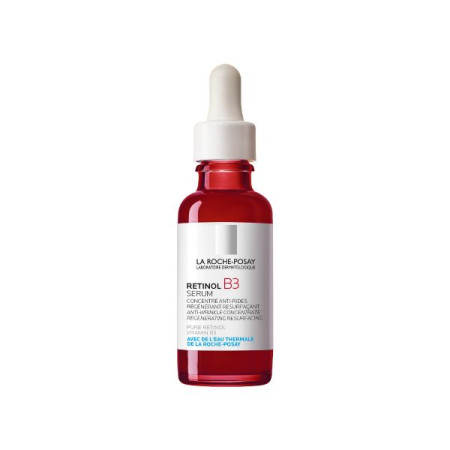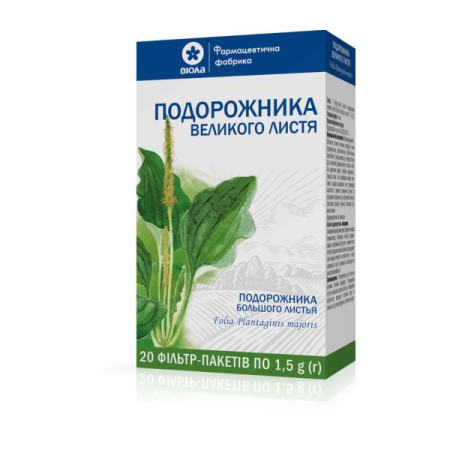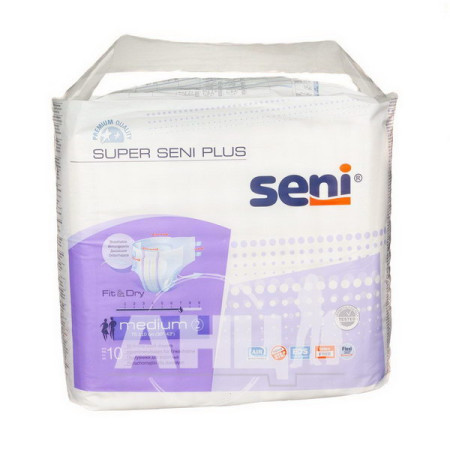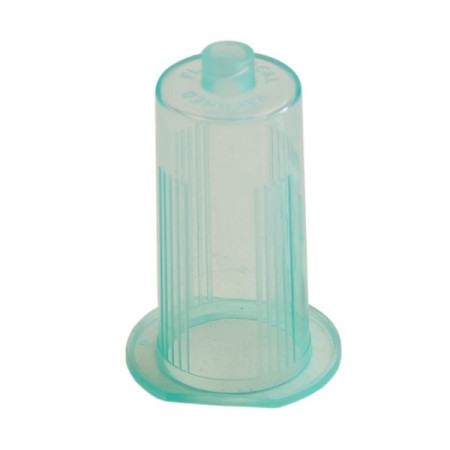Tobiflamin eye drops suspension bottle 5 ml
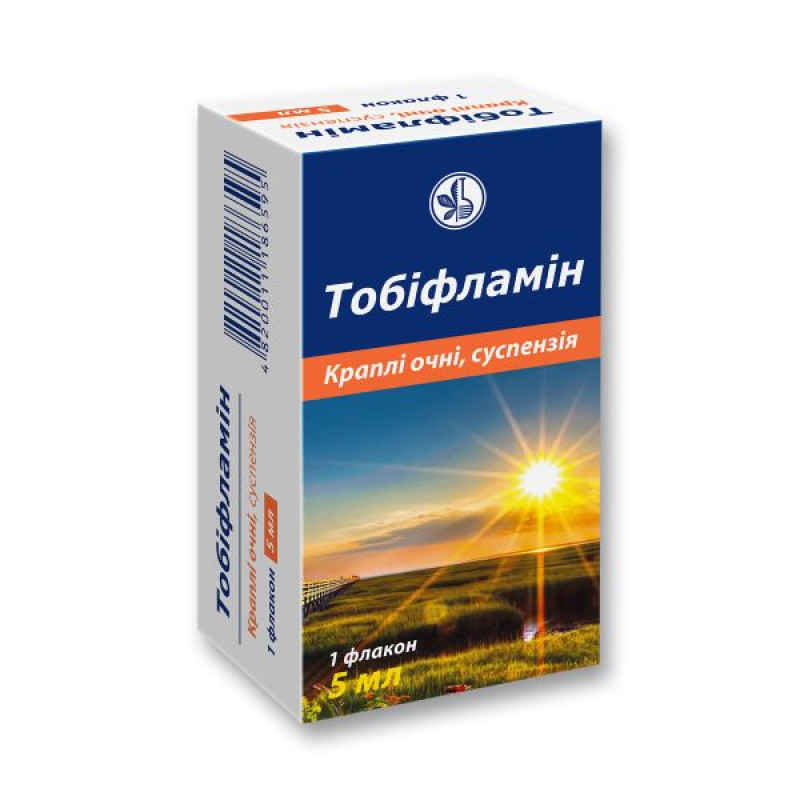
Instructions for use Tobiflamin eye drops suspension bottle 5 ml
Composition
active ingredients: tobramycin, dexamethasone;
1 ml of suspension contains tobramycin 3.0 mg and dexamethasone 1.0 mg;
Excipients: benzalkonium chloride, disodium edetate, sodium chloride, anhydrous sodium sulfate, tyloxapol, hydroxyethylcellulose, sulfuric acid and/or sodium hydroxide, water for injections.
Dosage form
Eye drops, suspension.
Main physicochemical properties: white homogeneous suspension.
Pharmacotherapeutic group
Anti-inflammatory and antimicrobial agents in combination. Corticosteroids and antimicrobial agents in combination. ATX code S01C A01.
Pharmacological properties
Pharmacodynamics
Dexamethasone
The efficacy of corticosteroids in the treatment of inflammatory ocular conditions is well established. Corticosteroids achieve their anti-inflammatory effects by inhibiting adhesion molecules to vascular endothelial cells, cyclooxygenase I or II, and cytokine release. This results in reduced production of inflammatory mediators and inhibition of the adhesion of circulating leukocytes to vascular endothelium, preventing their entry into inflamed ocular tissues. Dexamethasone has a pronounced anti-inflammatory effect with reduced mineralocorticoid activity compared with some other steroids and is one of the most potent anti-inflammatory agents.
Tobramycin
Tobramycin is a highly active, fast-acting bactericidal antibiotic of the aminoglycoside group, which counteracts both gram-positive and gram-negative microorganisms. Its mechanism of action is associated with the inhibition of the polypeptide complex and synthesis in the ribosomes of bacterial cells.
In general, the action of tobramycin has been described in vitro by determining the minimum inhibitory concentration (MIC), which determines the activity of the antibiotic against each bacterial species. Since the MIC of tobramycin is very low against most ocular pathogens, it is considered a broad-spectrum antibiotic. MIC breakpoints have been determined that determine the sensitivity or resistance of a bacterial culture to a particular antibiotic. The existing MIC breakpoints for tobramycin against the relevant bacterial species take into account the inherent sensitivity of the species, as well as the maximum concentration and pharmacokinetic time/concentration values measured in serum after oral administration. The determination of these breakpoints, which divide microorganisms into susceptible and resistant, has been used to determine the clinical efficacy of antibiotics administered systemically. However, when the antibiotic is applied topically in high concentrations directly to the site of infection, the determination of breakpoints is not used. Most microorganisms that would be classified as resistant by determining the breakpoints for systemic use actually respond well to topical treatment. For the purpose of prevention, it is possible to stop the development of such microorganisms that cause infection.
Topical tobramycin solution has been shown to be effective in clinical trials against many existing strains of ocular pathogens in patients enrolled in the trials. Some of these ocular pathogens are believed to be resistant based on the determination of systemic breakpoints. Tobramycin has been shown to be effective in clinical trials for the treatment of superficial ocular infections caused by the following pathogens.
Gram-positive bacteria
Staphylococcus aureus (methicillin-susceptible or resistant*)
Staphylococcus epidermidis (methicillin-susceptible or resistant*)
Other coagulase-negative Staphylococcus species
Streptococcus pneumoniae (penicillin-susceptible or resistant*)
Other Streptococcus species
* The beta-lactam (i.e., methicillin; penicillin) resistance phenotype is not associated with the aminoglycoside resistance phenotype, and both are unrelated to the virulence and phenotypes of the pathogenic organisms. Many methicillin-resistant staphylococci have been found to be resistant to tobramycin (and other aminoglycoside antibiotics). However, these resistant staphylococcal cultures (as determined by MIC breakpoints) usually respond successfully to topical tobramycin.
Gram-negative bacteria
Acinetobacter spp.
Citrobacter spp.
Enterobacter spp.
Escherichia coli
Haemophilus influenzae
Klebsiella pneumoniae
Moraxella spp.
Morganella morganii
Proteus mirabilis
Pseudomonas aeruginosa
Serratia marcescens
Bacterial susceptibility studies have shown that in some cases, microorganisms resistant to gentamicin remain susceptible to tobramycin. A significant proportion of the microflora has not yet developed resistance to tobramycin; however, bacterial resistance may develop during prolonged use.
Cross-sensitivity to other aminoglycoside antibiotics is possible. If hypersensitivity occurs during use of the drug, its use should be discontinued and appropriate treatment should be initiated.
Pharmacokinetics
Systemic exposure to dexamethasone after topical ophthalmic application of eye drops is low. Peak plasma concentrations range from 220 to 888 pg/mL (mean 555 ± 217 pg/mL) after instillation of one drop of the drug into each eye 4 times daily for two consecutive days.
Dexamethasone is eliminated from the body by metabolism. Approximately 60% of the dose is excreted in the urine as 6-β-hydroxydexamethasone. Unchanged dexamethasone was not detected in the urine. The plasma half-life is relatively short, 3-4 hours.
Dexamethasone is approximately 77-84% bound to serum albumin. Clearance ranges from 0.111 to 0.225 l/h/kg and volume of distribution ranges from 0.576 to 1.15 l/kg. Oral bioavailability is approximately 70%.
Tobramycin
Systemic exposure to tobramycin following topical ophthalmic application of eye drops is low. Plasma tobramycin concentrations were not quantifiable in 9 of 12 patients who received 1 drop in each eye 4 times daily for 2 consecutive days. The highest measured level was 0.25 μg/mL, which is 8-fold lower than the concentration of 2 μg/mL known to be below the risk of nephrotoxicity.
Tobramycin is rapidly and extensively excreted in the urine by glomerular filtration, mainly unchanged. The plasma half-life is approximately 2 hours with a clearance of 0.04 l/h/kg and a volume of distribution of 0.26 l/kg. Plasma protein binding of tobramycin is negligible - less than 10%. Oral bioavailability of tobramycin is low (< 1%).
Indication
Ocular inflammation in steroid-sensitive patients in whom corticosteroids are indicated and there is a superficial bacterial infection or risk of developing a bacterial infection of the eye. These inflammatory processes may occur after surgery or may be caused by infection, foreign body in the eye or ocular trauma.
Contraindication
Hypersensitivity to the active substances or to any component of the medicinal product; keratitis caused by the herpes simplex virus; cowpox, chickenpox and other viral infections of the cornea and conjunctiva; fungal diseases of the eye structures or untreated parasitic infections of the eye; mycobacterial infections of the eye.
Interaction with other medicinal products and other types of interactions
Concomitant use of topical steroids and topical nonsteroidal anti-inflammatory drugs (NSAIDs) may increase the risk of corneal wound healing complications.
Concomitant and/or sequential use of aminoglycoside antibiotics (such as tobramycin) and other systemic oral or topical drugs that have toxic (harmful) effects on the nervous system, hearing organs, or kidneys may result in additive toxicity and should be avoided if possible.
In patients receiving ritonavir, dexamethasone plasma concentrations may increase (see section 4.4).
If more than one ophthalmic product is applied topically, the interval between their applications should be at least 5 minutes. Eye ointments should be applied last.
CYP3A4 inhibitors (including ritonavir and combistatin) may decrease dexamethasone clearance and increase the adrenal suppression/Cushing's syndrome effect. Such combinations should be avoided unless the benefit outweighs the risk of increased systemic corticosteroid side effects, in which case patients should be closely monitored for systemic corticosteroid effects.
Application features
For ophthalmic use only.
Some patients may be hypersensitive to topical aminoglycosides. The severity of hypersensitivity reactions may range from local effects to generalized reactions such as erythema, pruritus, urticaria, skin rash, anaphylaxis, anaphylactoid reactions, or bullous reactions. If a hypersensitivity reaction occurs, the drug should be discontinued.
Cross-sensitivity to other aminoglycosides is possible. It should be considered that patients with hypersensitivity to topical tobramycin may also be sensitive to other aminoglycosides administered topically or systemically.
Prolonged treatment with topical ophthalmic corticosteroids may lead to ocular hypertension and/or glaucoma with optic nerve damage, decreased visual acuity and visual fields, and the formation of subcapsular cataracts in the posterior chamber of the eye. Patients receiving prolonged ocular corticosteroid therapy should have their intraocular pressure monitored regularly and repeatedly. This is particularly important in children, as the risk of corticosteroid-induced increased intraocular pressure may be greater in children and may occur earlier than in adults.
The risk of corticosteroid-induced increased intraocular pressure and/or the risk of corticosteroid-induced cataract formation is increased in predisposed patients (e.g., diabetics).
Cushing's syndrome and/or adrenal suppression associated with systemic absorption of ophthalmic dexamethasone may occur after intensive or prolonged continuous therapy in susceptible patients, including children and patients receiving CYP3A4 inhibitors, including combistat and ritonavir. In these cases, treatment should be discontinued gradually.
Visual disturbances are possible with systemic and topical corticosteroids. If the patient presents with symptoms such as blurred vision or other visual disturbances, they should be referred to an ophthalmologist for evaluation of possible causes, which may include cataracts, glaucoma, or rare conditions such as central serous chorioretinopathy (CSCR), which have been observed following the use of systemic and topical corticosteroids.
Corticosteroids may reduce resistance to bacterial, viral, fungal, or parasitic infections and may prevent the detection of such infections and mask the clinical signs of infection.
In cases of persistent corneal ulceration, the possibility of fungal infection should be considered. If fungal infection occurs, corticosteroid therapy should be discontinued.
Prolonged use of antibiotics such as tobramycin may result in overgrowth of non-susceptible organisms, including fungi. If superinfection occurs, appropriate therapy should be initiated.
Ophthalmic corticosteroids may slow the healing of corneal wounds. Topical NSAIDs are also known to slow or delay wound healing. Concomitant use of topical NSAIDs and topical steroids may increase the risk of wound healing complications (see section 4.5).
In the presence of diseases that lead to thinning of the cornea or sclera, topical steroid use may cause perforation.
It is not recommended to wear contact lenses while treating eye inflammation or infection.
This medicinal product contains benzalkonium chloride, which may cause eye irritation and is known to discolour soft contact lenses. Contact with soft contact lenses should be avoided. If the patient is permitted to wear contact lenses, they should be advised to remove contact lenses before using the product and to wait at least 15 minutes before reinserting them.
Ability to influence reaction speed when driving vehicles or other mechanisms
Tobiflamin eye drops has no or negligible influence on the ability to drive or use machines. Temporary blurred vision or other visual disturbances may affect the ability to drive or use machines. If blurred vision occurs during instillation, the patient should wait until the vision clears before driving or using machines.
Use during pregnancy or breastfeeding
Reproductive function. Studies aimed at evaluating the effects of tobramycin and dexamethasone on human or animal reproductive function have not been conducted. Clinical data to evaluate the effects of dexamethasone on male or female reproductive function are limited. No adverse reproductive effects were observed when dexamethasone was administered to rats sensitized to chorionic gonadotropin.
Pregnancy. There are no or limited data from the use of tobramycin or dexamethasone in pregnant women. After intravenous administration to pregnant women, tobramycin crosses the placenta and affects the fetus. Tobramycin does not cause ototoxicity in utero. Prolonged or repeated use of corticosteroids during pregnancy is associated with an increased risk of intrauterine growth retardation. Infants whose mothers received high doses of corticosteroids during pregnancy should be observed closely for signs of hypoadrenalism. Animal studies have shown reproductive toxicity following topical administration of dexamethasone and systemic administration of dexamethasone and tobramycin.
Breastfeeding. Tobramycin is excreted in breast milk after systemic administration. There are no data on the excretion of dexamethasone in breast milk. It is not known whether tobramycin and dexamethasone are excreted in breast milk after topical ophthalmic use. It is unlikely that tobramycin and dexamethasone will be excreted in breast milk after topical administration or that they will cause clinical effects in the newborn. A risk to the breastfed child cannot be excluded.
A decision must be made whether to discontinue breast-feeding or to discontinue/abstain from therapy taking into account the benefit of breast-feeding for the child and the benefit of therapy for the woman.
Because many drugs are excreted in human milk, consideration should be given to temporarily discontinuing breastfeeding while using the drug.
Method of administration and doses
For ophthalmic use.
Use in adults, including elderly patients, and children aged 12 to 18 years. Instill 1 or 2 drops into the conjunctival sac(s) every 4-6 hours. During the first 24-48 hours, the dose can be increased to 1 or 2 drops every 2 hours. The frequency of use of the drug should be gradually reduced as clinical signs improve. Care should be taken not to discontinue therapy prematurely.
In severe cases, instill 1 or 2 drops every hour until inflammation is controlled, and gradually reduce the frequency of use to 1 or 2 drops every 2 hours for 3 days; then instill 1-2 drops every 4 hours for 5-8 days, and finally 1-2 drops every day for the last 5-8 days if necessary.
After cataract surgery, the dose is 1 drop 4 times a day, starting on the day of surgery and continuing for 24 days. Treatment can be started the day before surgery with 1 drop 4 times a day, continuing with 1 drop after surgery, and then 4 times a day for 23 days. If necessary, the frequency of application of the drug can be increased to 1 drop every 2 hours during the first two days of therapy.
It is recommended to constantly monitor intraocular pressure.
It is recommended to press on the nasolacrimal opening and gently close the eyelids after instillation. This reduces the systemic absorption of the drug administered into the eye, which reduces the likelihood of systemic side effects.
Use in children. The data obtained confirm the safety and efficacy of the drug in children aged 1 year and older who were treated with the drug for 7 days for the treatment of superficial bacterial eye inflammation.
It can be used in children who need cataract surgery.
Use in case of impaired liver or kidney function
Tobiflamin has not been studied in this patient population. However, due to the low systemic absorption of tobramycin and dexamethasone after topical administration, no dose adjustment is necessary.
Method of application
The bottle should be shaken well before use.
To prevent contamination of the dropper tip and contents of the bottle, care should be taken not to touch the eyelids, surrounding areas, or other surfaces with the tip of the dropper bottle.
Store the bottle in an upright position.
Children
The doctor's recommendations should be followed when using the drug in children over 1 year of age. Safety and effectiveness in children under 1 year of age have not been established.
Overdose
Given the characteristics of this medicinal product, intended for topical use, no toxic effect is expected either when used in ophthalmology at the recommended doses or in the event of accidental ingestion of the contents of the vial. Possible clinical signs and symptoms of overdose with the drug (punctate keratitis, erythema, increased lacrimation, eyelid edema and itching) may be similar to the side effects observed in some patients.
In case of overdose with the drug Tobiflamin when applied topically, wash the excess drug from the eye(s) with warm water.
Adverse reactions
The most common adverse reactions, occurring in less than 1% of patients, were eye pain, increased intraocular pressure, eye irritation, and eye itching.
Immune system disorders: hypersensitivity, anaphylactic reaction.
From the nervous system: dizziness, headache.
On the part of the organs of vision: increased intraocular pressure, eye pain, eye itching, eye discomfort, eye irritation; keratitis, eye allergy, blurred vision, dry eyes, eye hyperemia, eyelid edema, eyelid erythema, mydriasis, increased lacrimation, ulcerative keratitis.
Gastrointestinal: dysgeusia; nausea, stomach discomfort.
Skin and subcutaneous tissue disorders: rash, facial edema, pruritus, erythema multiforme.
On the part of the endocrine system: Cushing's syndrome, adrenal suppression.
Description of some adverse reactions
Since the medicinal product contains a corticosteroid, in the presence of diseases leading to thinning of the cornea or sclera, the risk of perforation increases, especially after long-term use (see section "Special precautions for use").
Secondary infections may develop after the use of combinations containing corticosteroids and antimicrobials. Fungal infections of the cornea are particularly active with prolonged use of steroids (see section "Special instructions").
Patients receiving systemic therapy with tobramycin have experienced serious adverse reactions, including neurotoxicity, ototoxicity, and nephrotoxicity (see section 4.4).
Some adverse reactions such as corneal abrasion, visual impairment, conjunctival edema, eyelid disorders, eye discharge, eyelid pruritus, urticaria, dermatitis, madarosis, leucoderma, and dry skin have been observed during tobramycin therapy.
Adverse reactions such as keratoconjunctivitis, corneal staining, photophobia, eyelid margin scaling, decreased visual acuity, corneal erosion, and eyelid ptosis have been observed during dexamethasone therapy.
Some patients may experience a hypersensitivity reaction to aminoglycosides when used topically (see section "Special warnings and precautions for use").
Expiration date
2 years.
After opening the bottle, the shelf life is no more than 4 weeks.
Storage conditions
Store in the original packaging at a temperature not exceeding 25 °C.
Keep out of reach of children.
Packaging
5 ml in a polyethylene bottle with a dropper and tamper-evident cap, 1 bottle in a pack.
Vacation category
According to the recipe.
Producer
JSC "KYIV VITAMIN FACTORY" (production from bulk products of "Rafarm S.A.", Greece).
Location of the manufacturer and its business address
04073, Ukraine, Kyiv, Kopylivska St., 38.
There are no reviews for this product.
There are no reviews for this product, be the first to leave your review.
No questions about this product, be the first and ask your question.




